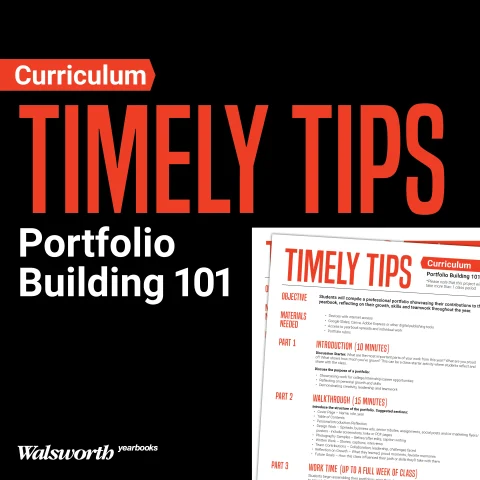How many students does it take to misplace the stapler in a classroom?
One. Now multiply that by the number of students on your yearbook staff, and keeping your classroom organized will not happen unless you have a plan.
There are two parts to this plan of room organization. The first part is organizing the equipment, supplies and procedures so they are convenient for you and your staff. The second, and more difficult, part is keeping it that way.
Having a place to keep everything heads the list of the best way to organize the room. Mailboxes, mail slots, drawers, and cubbies are used most. These usually are used in two ways: for the students or for the pages.
Julie Weeks, a Walsworth yearbook representative in Georgia, used mailboxes for her students when she was an adviser.
“It is a great way to keep things clean, and leave messages and assignments so you don’t have to remember them,” Weeks said.
Former adviser Thorun Zitner-Crawford, a yearbook representative from Alabama, had a huge set of mail slots labeled with each spread. That way, she always knew where every part of every spread was located.
New situations require new solutions. Celeste Hilliard, Clay High School, South Bend, Ind., was reminded of the importance of storage space when she moved to a smaller classroom in a different building last year. She was picking up after students and getting mad about it when she realized they had no place to put things like in her previous room. So she asked the woodshop class to make her mailboxes big enough for disks, and she used color-coded envelopes for items. Editors each have a drawer in an old file cabinet.
“Every staff member needs a drawer, a pigeon hole, someplace to put their disk, pictures and page envelopes,” Hilliard said.
Other types of storage are needed, too. Weeks said a supply box with all the office necessities needs to be easily accessible. She recommended a tackle box for this purpose. A locking file cabinet also is a good place to store cameras, film, computer disks, and cash.
Sometimes you have to get creative with filing. Most classrooms have at least two vertical files called walls, and they are great for holding all types of information. Weeks recommends posting these items.
- A map of the school with teachers’ names and rooms, “so there are no excuses that staff can’t find an event to take a photo of or to do an interview”
- The sports schedule for the photo editor
- A map of the county so ad sellers can find businesses
- The ladder and deadlines
- The ad sales chart so students can color in their progress.
- All Walsworth posters and guides
“We have a whole wall of cool layouts cut from magazines, fun copy and lots of pictures,” said Michael Danielson, adviser at Seattle Preparatory School in Seattle, Wash.
In addition to posting these items on walls or bulletin boards, Cam Hale, adviser at Huntington High School, Huntington, W. Va., hangs a calendar and a list of work to be completed.
“We also put in large print and post names that are unusual and difficult to spell, such Alexandroupolus or Chuekameka,” Hale said.
“Also, sometimes editors and some staff are not in the same class, so they can leave notes or questions on the message board.”
What if you do not have an entire classroom? If the classroom is used for other classes, set up tables to the side or back for the yearbook computers and office supplies, said Danielle Bradley, adviser at Silver Trail Middle School, Pembroke Pines, Fla.
And speaking of those computers:
“Keep the important stuff within arm’s reach. We put the ladder, copies of completed pages, Walsworth computer guides, click art and color books between bookends between the computers,” Hale said.
The room also should have a library area for sample books and books on journalism, layout and design.
Both Bradley and Hale reuse the Walsworth bins that the Publishing Kit comes in.
“We keep those labeled as pages in progress, completed pages or we label a box specially for large sections, such as sophomores,” Hale said.
So, your room is organized. Keeping it that way has to do with responsibility and who you plan to place it with, everyone or a few staff members.
“Go over the rules at the beginning of the year for keeping the room neat,” said Bradley, who solicits everyone’s help.
Weeks always designated the business manager as the office manager and included room organization in that personís job duties.
“It was their responsibility to keep the classroom tidy. It didn’t matter if they did it themselves or delegated it, but it was their assignment and part of their grade,” Weeks said.
While paper and computer files, photos and equipment need to be protected and organized, Amy Morgan, adviser at Shawnee Mission West High School, Overland Park, Kan., said one other area sometimes is forgotten.
“You need to protect your own space or it starts to get too much. The kids start to think my desk is theirs. I tell them, if I was at a business, no one would sit at my desk or use my supplies.”



